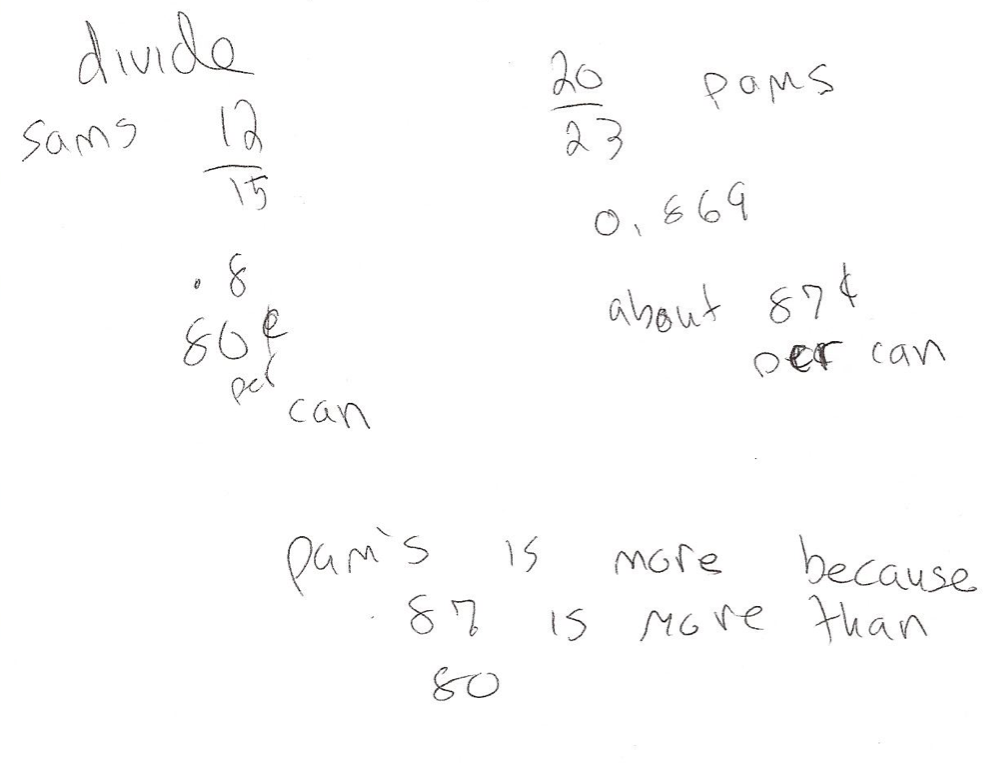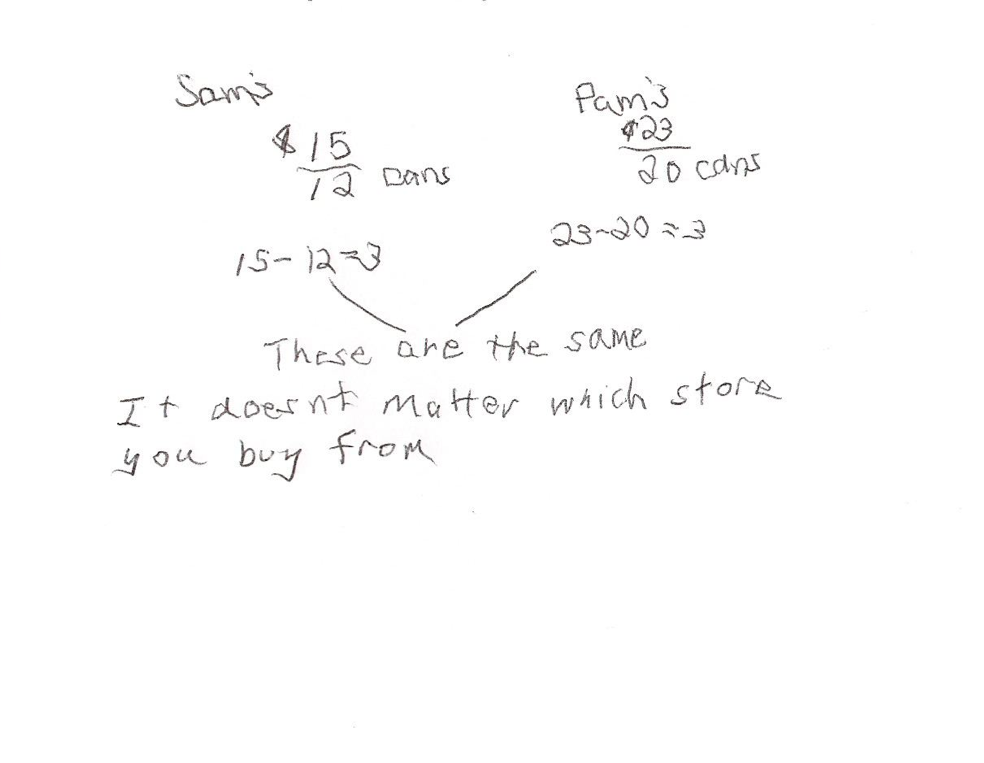Lesson Overview
This lesson follows previous work around ratios, but is the first lesson on unit rates.
- Independent work: Compare costs for cat food sold at two stores that use different rates for their pricing.
- Small groups: Share methods and look for similarities and differences in the methods used.
- Full Class: Groups share the similarities and differences.
- Summary/closure: Teacher emphasizes the use of multiplication and division, even when methods were different.
Independent Work Task
Two stores are advertising the following:
- Sam's Super Supplies — 12 cans of Kittie Kittles for $15
- Pam's Pet Potpourri — 20 cans of Kittie Kittles for $23
Kittie Kittles is your kitten's favorite cat food, so you plan to purchase the food from one of the two stores.
Which store has the better price? How do you know?
Independent Work Task
Two stores are advertising the following:
- Sam's Super Supplies — 12 cans of Kittie Kittles for $15
- Pam's Pet Potpourri — 20 cans of Kittie Kittles for $23
Kittie Kittles is your kitten's favorite cat food, so you plan to purchase the food from one of the two stores.
Which store has the better price? How do you know?
Student Work
Student 1

|
Student 2

|
Feedback for Student 1:





 |
Feedback for Student 2:



 |
| Feedback for Student 1 |







|
| Characteristic 1 |







|
| Characteristic 2 |







|
| Feedback for Student 2 |





|
| Characteristic 1 |





|
| Characteristic 2 |





|
|
|
 |



















































